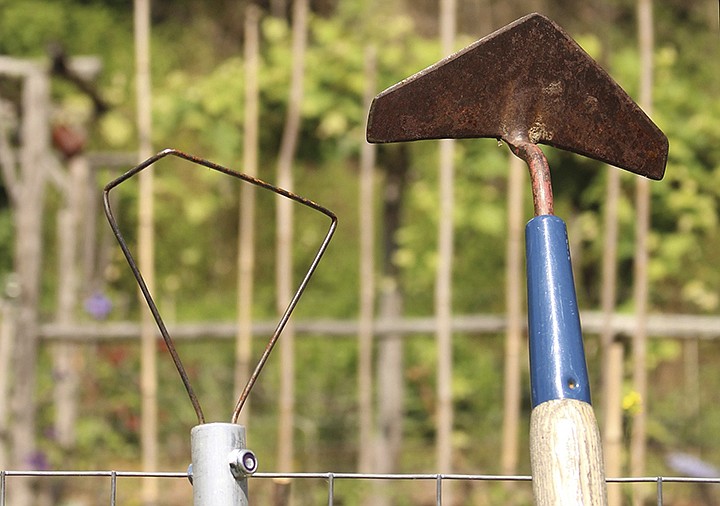Hopefully, I've caught you in time, before your weeds have grown lusty. I want you to consider the much maligned hoe.
Wait! Don't stop reading. I know hoeing is the activity that (perhaps because they had to do it when they were young) makes too many adults give up gardening altogether. Hoeing was undoubtedly in Charles Dudley Warner's mind when he wrote, over a hundred years ago in "My Summer in the Garden," that what a gardener needs is "a cast-iron back with a hinge in it."
But the bad rap that hoeing has among many people comes from using the wrong hoe in the wrong way at the wrong time.
In fact, hoeing can be a pleasant activity that does a better job of weed control than a tiller and leaves garden plants in better condition.
The garden hoe that most people have hanging in their garages, and generally do not use, has a heavy rectangular blade that is roughly 6 inches square and is mounted roughly perpendicularly to the handle.
I also own one of these rough hoes, but I do use mine-only for mixing concrete, a job for which this hoe is ideally suited. In the garden, people use this concrete hoe, as I'll call it, with a chopping motion on large weeds. But we all know what happens when you chop the tops off dandelions or thistles: They grow right back and you get an achy back.
To keep the garden weeded and the soil surface loose enough to let rainwater seep in, you want a more delicate hoe. The hoes I have in mind have small, sharp blades that are parallel to the soil surface when you grip the handle in a comfortable, upright stance. These hoes are relative newcomers to the garden scene, and include the scuffle hoe, colinear hoe, diamond hoe and-one of my favorites-the winged weeder.
None of these hoes that I am recommending requires a chopping motion or a cast-iron, hinged back. With blades that are sharp on both sides, these hoes cut through the soil on both the push and the pull strokes. Use them just this way, with the blade a hair beneath the soil surface, as you walk backward as if you were using a mop.
Newer on the scene is the "wire weeder." This one works best in loose soil that has been weeded by hand or hoe regularly. Under these conditions, the wire weeder is a joy to use; it's like a stroll along your garden paths. Just walk along comfortably dragging the horizontal wire just beneath the soil surface. Sprouting weeds that you see and don't see are uprooted to dry in the sun.
Using these hoes is so easy because you're not moving a lot of soil. You're cutting a slice just below the surface, and doing so with a sharp blade or a wire.
Not disrupting the soil also has future benefits. It leaves the roots of nearby garden plants unscathed. And buried within every soil are myriad dormant weed seeds just waiting to be awakened by light and air, which is what happens when rototilling or vigorous chopping with a concrete hoe brings buried weed seeds to the surface. The hoes I'm recommending hardly disturb the soil.

